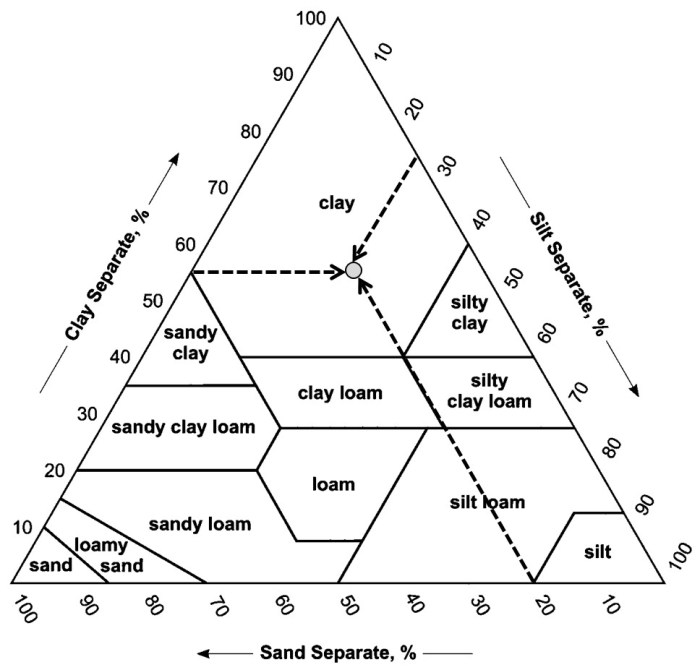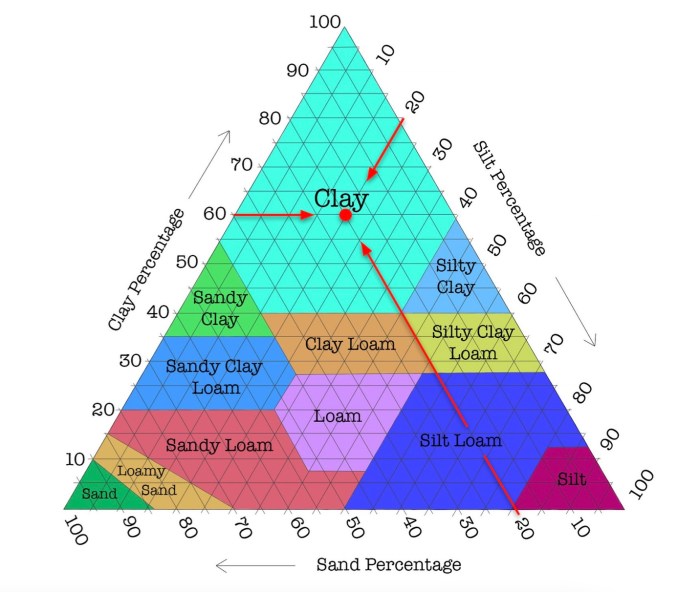The soil texture triangle activity worksheet answer key PDF provides a valuable resource for understanding soil texture and its implications for agricultural practices. This comprehensive guide offers a detailed overview of the soil texture triangle, its components, and its applications, empowering users to make informed decisions about soil management.
The soil texture triangle is a graphical representation of the relative proportions of sand, silt, and clay particles in a soil sample. Understanding soil texture is crucial for optimizing crop growth, water retention, and nutrient availability. This activity worksheet provides hands-on experience in determining soil texture class, equipping users with the knowledge to enhance soil health and agricultural productivity.
Soil Texture Triangle Activity Worksheet: Soil Texture Triangle Activity Worksheet Answer Key Pdf

A soil texture triangle activity worksheet is a tool used to determine the soil texture class of a soil sample. It is a visual representation of the soil texture triangle, which is a diagram that shows the different soil texture classes based on the percentages of sand, silt, and clay in the soil.
The purpose of using a soil texture triangle activity worksheet is to help students understand the concept of soil texture and how it affects soil properties. Soil texture is an important factor in agricultural practices, as it influences water infiltration, nutrient availability, and plant growth.
Soil Texture Triangle, Soil texture triangle activity worksheet answer key pdf
The soil texture triangle is a triangular diagram that shows the different soil texture classes based on the percentages of sand, silt, and clay in the soil. The triangle is divided into three main sections: the sand fraction, the silt fraction, and the clay fraction.
The percentages of sand, silt, and clay in a soil sample are plotted on the triangle, and the soil texture class is determined by the point where the three lines intersect.
There are 12 different soil texture classes, which are listed below in order from coarsest to finest:
- Sand
- Loamy sand
- Sandy loam
- Loam
- Silt loam
- Silt
- Sandy clay loam
- Clay loam
- Silty clay loam
- Sandy clay
- Silty clay
- Clay
Activity Worksheet
A sample soil texture triangle activity worksheet is provided below. The worksheet includes instructions on how to use the soil texture triangle to determine soil texture class. The worksheet also includes examples of different soil samples and their corresponding soil texture classes.
Instructions:
- Plot the percentages of sand, silt, and clay in the soil sample on the soil texture triangle.
- Draw lines from each point to the opposite side of the triangle.
- The soil texture class is determined by the point where the three lines intersect.
Examples:| Soil Sample | Sand (%) | Silt (%) | Clay (%) | Soil Texture Class ||—|—|—|—|—|| Sample 1 | 70 | 20 | 10 | Sand || Sample 2 | 50 | 30 | 20 | Loamy sand || Sample 3 | 40 | 40 | 20 | Sandy loam || Sample 4 | 30 | 50 | 20 | Loam || Sample 5 | 20 | 60 | 20 | Silt loam |
Answer Key
The answer key for the soil texture triangle activity worksheet is provided below. The answer key includes the soil texture class for each of the soil samples in the worksheet.
Answer Key:| Soil Sample | Soil Texture Class ||—|—|| Sample 1 | Sand || Sample 2 | Loamy sand || Sample 3 | Sandy loam || Sample 4 | Loam || Sample 5 | Silt loam |
Conclusion
Understanding soil texture is important for agricultural practices. Soil texture affects water infiltration, nutrient availability, and plant growth. A soil texture triangle activity worksheet is a useful tool for students to learn about soil texture and how it affects soil properties.
For further learning about soil texture, please refer to the following resources:
- Soil Texture Triangle: https://www.nrcs.usda.gov/wps/portal/nrcs/detail/soils/survey/?cid=nrcs142p2_053550
- Soil Texture: https://www.soils4teachers.org/lesson-plans/soil-texture
- Soil Texture Triangle Activity Worksheet: https://www.education.com/science-fair/article/soil-texture-triangle-activity/
Common Queries
What is the purpose of a soil texture triangle activity worksheet?
The soil texture triangle activity worksheet is designed to provide hands-on experience in determining soil texture class based on the relative proportions of sand, silt, and clay particles in a soil sample.
How do I use the soil texture triangle to determine soil texture class?
To determine soil texture class using the soil texture triangle, locate the percentage of sand, silt, and clay on the respective axes of the triangle and draw lines parallel to the sides of the triangle to form a triangle. The point where the lines intersect indicates the soil texture class.
What are the potential limitations of using the soil texture triangle?
While the soil texture triangle is a useful tool for estimating soil texture class, it has certain limitations. It does not account for factors such as soil structure, organic matter content, and mineralogy, which can influence soil behavior.


